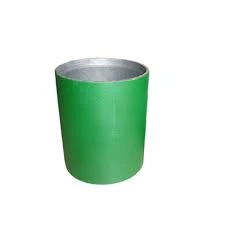- Afrikaans
- Albanian
- Amharic
- Arabic
- Armenian
- Azerbaijani
- Basque
- Belarusian
- Bengali
- Bosnian
- Bulgarian
- Catalan
- Cebuano
- Corsican
- Croatian
- Czech
- Danish
- Dutch
- English
- Esperanto
- Estonian
- Finnish
- French
- Frisian
- Galician
- Georgian
- German
- Greek
- Gujarati
- Haitian Creole
- hausa
- hawaiian
- Hebrew
- Hindi
- Miao
- Hungarian
- Icelandic
- igbo
- Indonesian
- irish
- Italian
- Japanese
- Javanese
- Kannada
- kazakh
- Khmer
- Rwandese
- Korean
- Kurdish
- Kyrgyz
- Lao
- Latin
- Latvian
- Lithuanian
- Luxembourgish
- Macedonian
- Malgashi
- Malay
- Malayalam
- Maltese
- Maori
- Marathi
- Mongolian
- Myanmar
- Nepali
- Norwegian
- Norwegian
- Occitan
- Pashto
- Persian
- Polish
- Portuguese
- Punjabi
- Romanian
- Russian
- Samoan
- Scottish Gaelic
- Serbian
- Sesotho
- Shona
- Sindhi
- Sinhala
- Slovak
- Slovenian
- Somali
- Spanish
- Sundanese
- Swahili
- Swedish
- Tagalog
- Tajik
- Tamil
- Tatar
- Telugu
- Thai
- Turkish
- Turkmen
- Ukrainian
- Urdu
- Uighur
- Uzbek
- Vietnamese
- Welsh
- Bantu
- Yiddish
- Yoruba
- Zulu
steel coupling
Understanding Steel Coupling Key Concepts and Applications
Steel coupling refers to the use of steel elements to connect two parts of a structural system or machinery, enabling efficient transfer of loads and moments. This mechanism plays a critical role in various engineering applications, including construction, machinery design, and transportation infrastructure. Understanding how steel couplings function, their types, and their applications can significantly enhance the performance and durability of structures and systems.
Types of Steel Couplings
There are several types of steel couplings designed for different applications. The most common types include
1. Rigid Couplings These couplings provide a solid connection between two shafts, ensuring that they rotate together without any angular misalignment. Rigid couplings are typically used in applications where exact alignment is crucial, such as in conveyor systems and high-precision machinery.
2. Flexible Couplings Unlike rigid couplings, flexible couplings allow for some degree of angular, parallel, or axial misalignment. This makes them ideal for applications where slight misalignment is inevitable, such as in automotive and industrial equipment. Flexible couplings help reduce wear and tear on machinery by absorbing vibrations and shocks.
3. Universal Couplings These versatile couplings can accommodate misalignments in multiple directions, making them a popular choice for complex machinery and vehicles. Universal couplings are commonly found in applications ranging from drive shafts in cars to robotic arms in manufacturing processes.
4. Elastomeric Couplings These couplings use elastomer materials to provide flexibility and damping. They are particularly effective in reducing vibrations and are often used in applications that require noise reduction, such as HVAC systems and some consumer appliances.
steel coupling

Applications of Steel Couplings
Steel couplings are utilized in a vast range of industries, reflecting their adaptability and essential role in engineering. Some notable applications include
- Construction In structural engineering, steel couplings are often used to connect beams, columns, and other structural elements. They help maintain the integrity of buildings and bridges, ensuring that loads are distributed evenly and safely.
- Machinery In machinery, steel couplings connect different components such as motors, gears, and pumps. They facilitate smooth operation and efficient energy transfer, essential for overall machine performance.
- Transportation Steel couplings are crucial in vehicles, enabling the connection of various drive components. They enhance the reliability of power transmission, which is vital for both performance and safety.
- Manufacturing In manufacturing settings, steel couplings connect conveyor belts, robotic systems, and other machinery. Their flexibility and robustness allow for high-efficiency operations, catering to the demands of modern industrial processes.
Conclusion
In summary, steel coupling is an essential component in the world of engineering and design, facilitating critical connections across various applications. With different types available, such as rigid, flexible, universal, and elastomeric couplings, engineers can choose the appropriate coupling to meet specific requirements. As technology evolves, the importance of steel couplings will continue to grow, playing a pivotal role in ensuring the efficiency and safety of engineering systems worldwide. Understanding these components not only enhances engineering practices but also contributes to the longevity and reliability of constructed systems and machinery. As industries strive for greater efficiency, the ongoing development of steel couplings will undoubtedly remain a focal point in engineering advancements.
-
Tubing Pup Joints: Essential Components for Oil and Gas OperationsNewsJul.10,2025
-
Pup Joints: Essential Components for Reliable Drilling OperationsNewsJul.10,2025
-
Pipe Couplings: Connecting Your World EfficientlyNewsJul.10,2025
-
Mastering Oilfield Operations with Quality Tubing and CasingNewsJul.10,2025
-
High-Quality Casing Couplings for Every NeedNewsJul.10,2025
-
Boost Your Drilling Efficiency with Premium Crossover Tools & Seating NipplesNewsJul.10,2025







